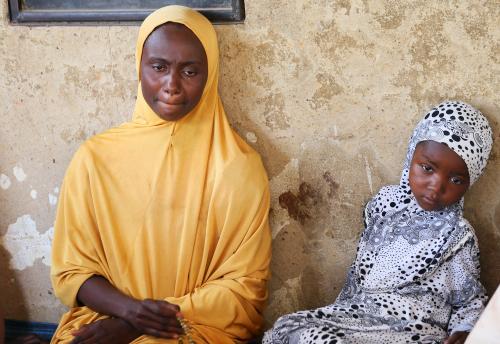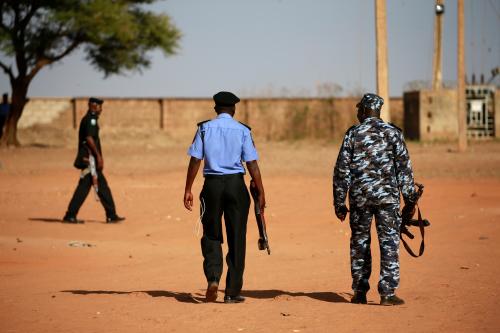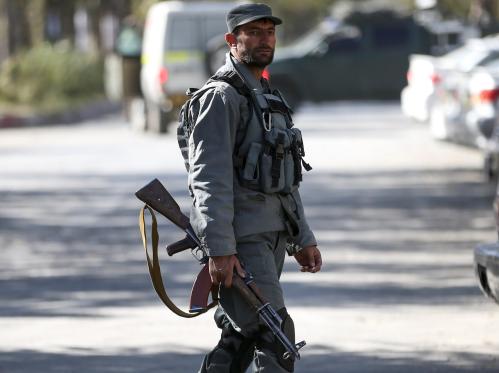For decades, belligerent groups have financed their operations by tapping into a variety of locally available economies, including illegal ones. The Shining Path in Peru was among the first groups to tax drug cultivation and smuggling. The Khmer Rouge in Cambodia prolonged its life by being heavily involved in logging. The various ethnonationalist insurgencies in Myanmar have been heavily involved in drug trade, legal and illegal logging, mining, as well as wildlife trafficking. The Islamic State in Syria and Iraq has looted and smuggled antiquities, and traded in oil. The Sudanese Janjaweed have extensively poached West African elephants to finance their operations. Mokhtar Belmokhtar and other militants in the Sahel have smuggled not only in cigarettes and drugs, but also eggs – even if the narcoterrorism label catches public attention and eggterrorism doesn’t.
Since belligerent groups can derive tens of millions of dollars, potentially hundreds of millions of dollars (though not often) per year from these activities, they experience a significant increase in their military power and sustainment capacity. Consequently, a conventional view has emerged that governments should focus on eliminating the belligerents’ physical resources by eliminating the illicit economies on which they rely.
This conventional view also frequently maintains that whether or not the belligerent groups ever had any ideological goals, once they interact with the illicit economy, they lose all but pecuniary motivations and become indistinguishable from pure criminals. In many cases, they partner or merge with organized crime groups. Profiting immensely from the illicit economy, they have no motivation to achieve a negotiated settlement with the government. Aggressive law enforcement—principally through eradication of the illicit economy—thus becomes the government’s preferred option.
In short, the conventional view is based on three key premises. First, belligerents make money from illicit economies. Second, the destruction of the illicit economy is both necessary and optimal for defeating the belligerents, because it will critically eliminate their resources. And third, the belligerents who participate in the illicit economy must no longer be treated as different from the criminals who also participate in the illicit economy.
Yet this organized-crime-terrorism-nexus view is strikingly incomplete and often leads to ineffective and even counterproductive policy recommendations.
First, destroying an economy, including an illegal one, is actually really difficult. Similarly defunding insurgent and terrorist groups is rarely successful as they can adapt in various ways, including by switching to other economies.
For example, when coca production levels were temporarily suppressed in Colombia in the mid-2000s as a result of a very extensive U.S.-sponsored eradication campaign, both the leftist guerrillas and the rightist paramilitaries and their descendants – the so-called bandas criminales – diversified their portfolios into illegal mining, logging, kidnapping, and generalized extortion. Indeed, despite the mystique of narcoterrorism, belligerents mostly tax anything in areas where they have sufficient intimidation power – the Taliban in Afghanistan taxing the convoys of their opponents, such as the United States and NATO, being a prime example.
Second, anti-money-laundering efforts are not the silver bullet many often hope. There are limits to how much terrorist money or organized crime groups’ money or illicit financial flows banks can find and stop. Illegal groups can easily move their transactions out of the banking sector into hawalas, online gaming, trade-based under- or over-invoicing, and virtual currencies, to name just a few mechanisms.
Further, overstrict due diligence requirements come with costs – and not merely for other public goods objectives but also for counterterrorism efforts themselves. The fact that few Western banks now dare operate in Somalia has severely hampered the delivery of remittances on which some of the world’s most battered people and the country depend. The employment and dislocation generated by a further suppression of an already poor economy can produce new recruits for the Shabaab and various militias, and further weaken the Somali government (problematic as it is), thus stimulating instability and terrorism.
Third, the conventional view fails to recognize that belligerents derive much more than large financial profits from their sponsorship of illicit economies. They also obtain freedom of action as well as legitimacy and support from the local population – what I call political capital. By supporting the illicit economy, belligerents both increase their military capability and build political support.
Supporting illicit economies will generate the most political capital for belligerents when the state of the overall economy is poor, the illicit economy is labor-intensive, thuggish traffickers are active in the illicit economy, and the government has adopted a harsh repressive strategy toward the illicit economy, such as eradication. The FARC in Colombia, the Taliban in Afghanistan, the Shining Path in Peru, and many other belligerent groups have learned that a great way to entrench themselves in the local population is to protect the coca and poppy fields that the government forces are trying to eradicate. The U.S. and NATO decisions not to promote eradication in Afghanistan, and in fact mostly defund it, were the right ones for the counterinsurgency to have any chance to succeed in the country. Nor has eradication anywhere in the world succeeded in wiping out a drug economy while conflict has been ongoing.
In sum, the siren song of counterterrorism and counterinsurgency efforts is to take the money away from the belligerents. In practice, success is rare. And depending on what method is chosen to chase the money, serious counterproductive effects can be generated that hamper, not enhance, counterterrorism and counterinsurgency efforts. As with other counterterrorism approaches, a careful pros and cons analysis is needed, one that carefully assesses the estimated levels of effectiveness as well as the side-effects of policies, including the political ones.
This piece was originally published by The Cipher Brief.



Commentary
Op-edCounter threat finance—Not a silver bullet
November 4, 2015